AMD Ryzen 9 3900 Tested: Unreleased 65W Processor Sets World Records

The Ryzen 9 3900X brings 12 cores and 24 threads to the mainstream desktop, setting a new record for the platform, but it also brings a beastly 105W TDP. AMD still has a few Ryzen 3000 CPUs it hasn’t released, though, and the first hints of the new 12-core 24-thread Ryzen 9 3900 came with the company’s recent introduction of its PRO series. But we know a consumer version, likely with the exact same specifications as the PRO model, is coming to market, and after a quick word with a vendor, we now have the Ryzen 9 3900 and have already set a few world records.
The power-saving version of the Ryzen 9 3900X has a staggeringly low TDP of 65W. To achieve this, the processor runs at a lower base and boost speed, but otherwise, it is the same as its “X” counterpart. Like all Ryzen models, it is a fully unlocked CPU, meaning overclocking is on the menu, and has the same cache capacity and hierarchy as its bigger, faster brother, the Ryzen 9 3900X that sucks down a whopping 105W.
Stock Speeds
As a “non-X” Ryzen model, we expect the 3900’s clocks to be lower than the 3900X, and they are. The chip reported clocks in the BIOS after a fresh CMOS clear at a fairly-low 3.1 GHz base, which looks weak compared to the 3.8 GHz on the 3900X.
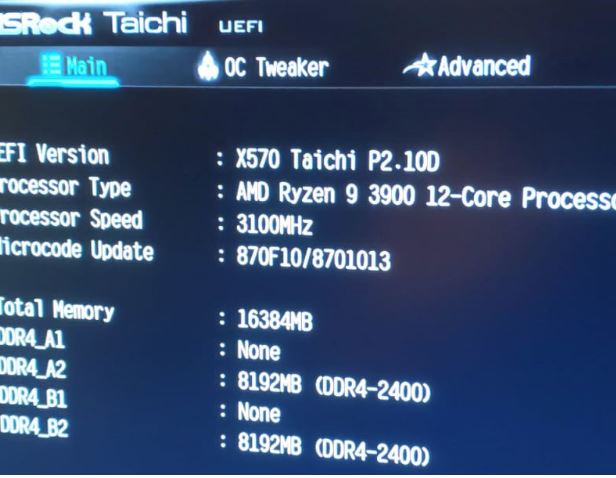
Reporting on clock frequency is a hot button topic with Ryzen chips at the moment, and your mileage may vary.
Once in the OS, we see that we get anywhere between 3.1 GHz and 4.35 GHz when the cores fluctuate during boost activity.
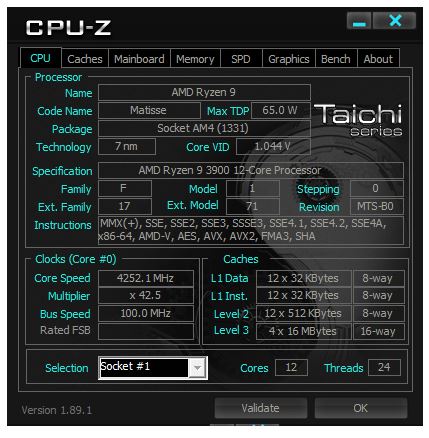
Under a heavy load, in this case the Cinebench R20 benchmark, we get boosts up and down in the range of 3.95 to 4.05 GHz average clock speed, while power consumption peaks at 160 watts during the run.
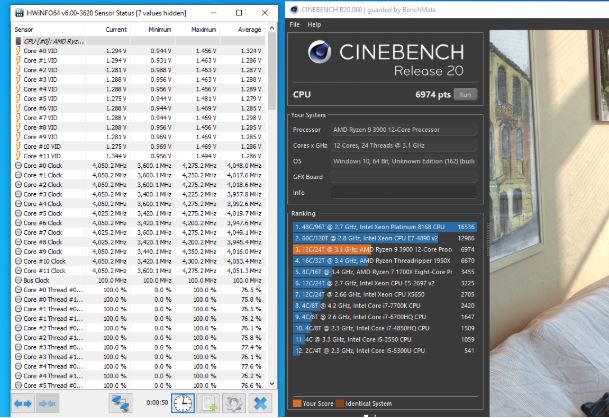
Overclocking: Ambient Cooling
| Processor | Ryzen 9 3900 |
| Motherboard | ASRock X570 Taichi |
| Graphics Card | ASRock Radeon RX 560X |
| Memory | Team Group A2 B-Die Memory |
| Power Supply | Enermax MaxTyan 1250W |
| Cooler | Enermax Liqtech II 360 White |
| Thermal Paste | Thermal Grizzly Kryonaut LHe Edition |
| Storage | Team Group L5 3D (256GB) |
Using a fixed frequency and manual overclocking, we dialed in a 1.375 vCore and achieved stability in Cinebench R15 with all cores locked at a static 4.35 GHz. Quite Respectable!
Stay On the Cutting Edge: Get the Tom's Hardware Newsletter
Get Tom's Hardware's best news and in-depth reviews, straight to your inbox.
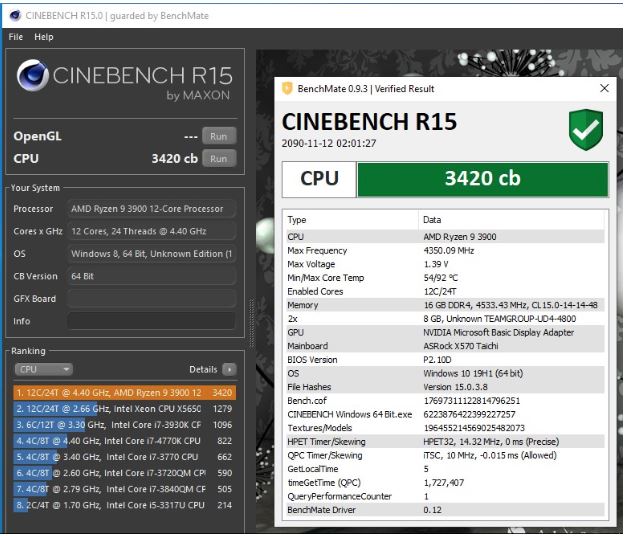
Overclocking: SubZero Cooling
| Same Hardware as Ambient |
| 8ECC Beast Pot with modified hold-down |
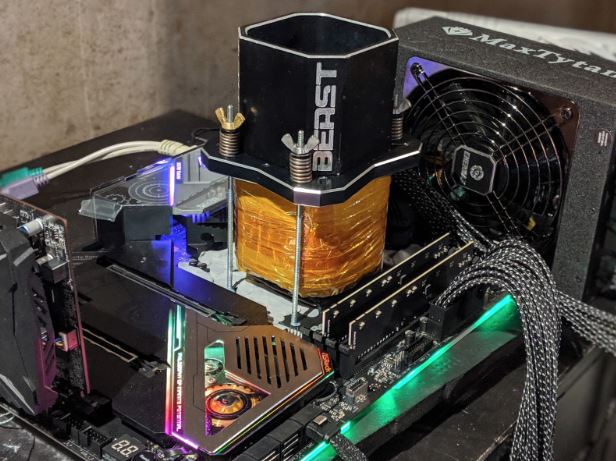
One of the ways to really test the silicon quality of a CPU is to test it with liquid nitrogen (LN2). It removes many variables such as the user using chilled water, winter air, liquid metal cooling, an AIO, a giant MO-RA 9x120mm radiator, or a pure gold water block, etc. These type of setup variations happen a lot with chip comparisons on forums and Facebook groups.
In reality, a 5C difference in ambient temperature can cost you stability. So by removing ambient temperature, along with exotic metal thermal pastes and chilled ambients, we can compare apples-to-apples against the Ryzen 9 3900X results that are already in the HWBot.org database. Slapping a big piece of copper on top of the chip and getting the chip as cold as we can removes the limit of cooling (mostly), and moves us to the limits of the silicon.
LN2 overclocking with Ryzen is quite a challenge, even though there is no fully-integrated voltage regulator (FIVR) equivalent to cause cold bug issues (where the CPU is too cold to function). So, like current-gen Intel HEDT CPUs, we are left battling the fabric clock. It varies from chip to chip, but on the processor I’m using, we need it to be set at 1467 MHz, or less. If you try even 1500 MHz, the cold bug comes back.
This matters because the chip will overclock better at -192C than it will at -185C. So we must balance the negative effect with running the fabric lower than we can on even ambient cooling, with the positive effect of running colder allowing us to gain CPU core frequency. Yikes!
For example, 5.45GHz will fail at -185c, but can run a 1500 MHz fabric clock. 5.5 GHz will pass at -192C, but you need a 1467 MHz fabric clock to allow you to go that cold. In my opinion, it is best to find your “no cold bug settings” and forgive the slight decrease in fabric clocks to gain a higher core clock.
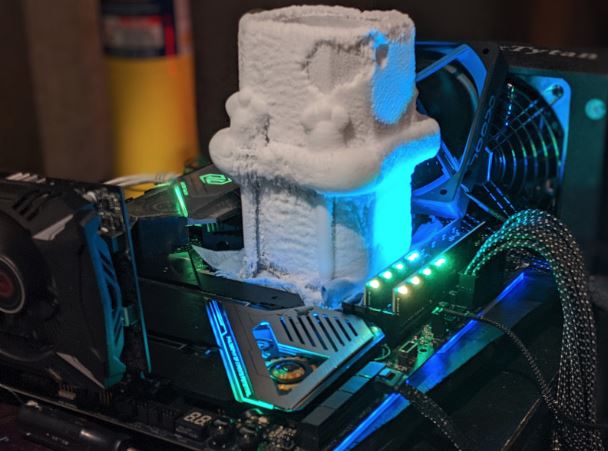
The results of this trick speak for themselves. In Cinebench R15 Guarded By Benchmate, I achieved the world record for 12-core CPUs with the Ryzen 9 3900 clocked at 5.5 GHz (all threads).
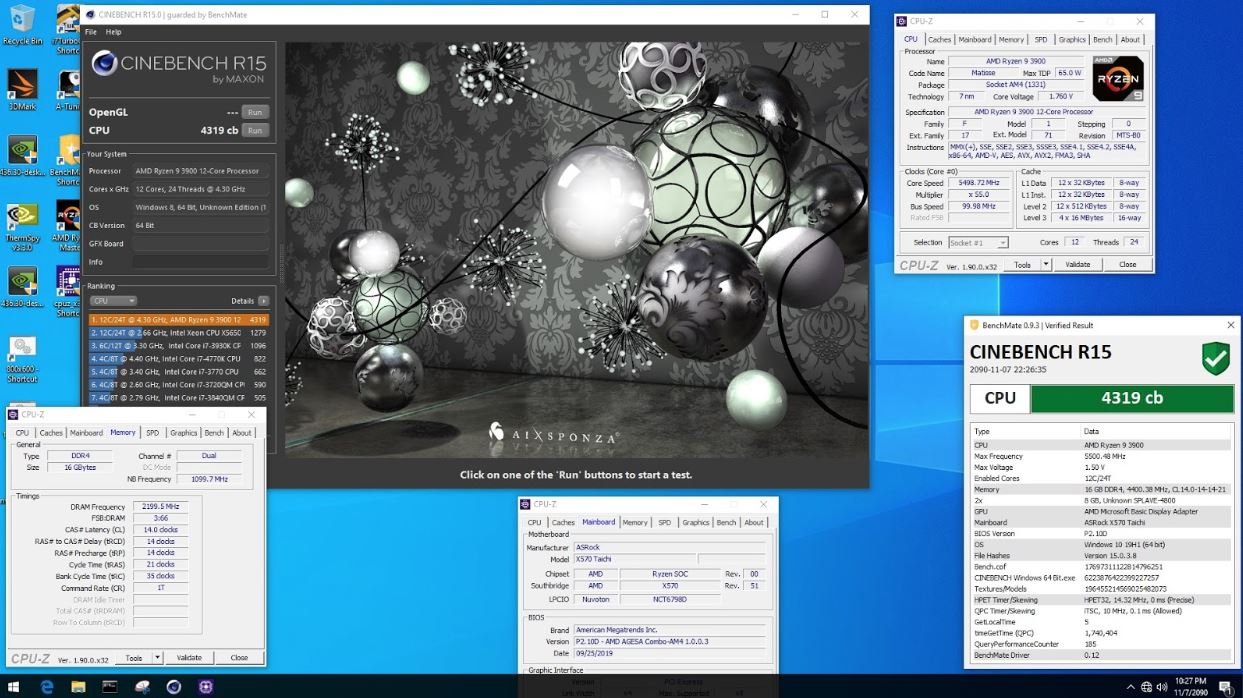
I also took the world record for Geekbench 3 Guarded By Benchmate for 12-core CPUs with clocks at 5.475 GHz (all threads).
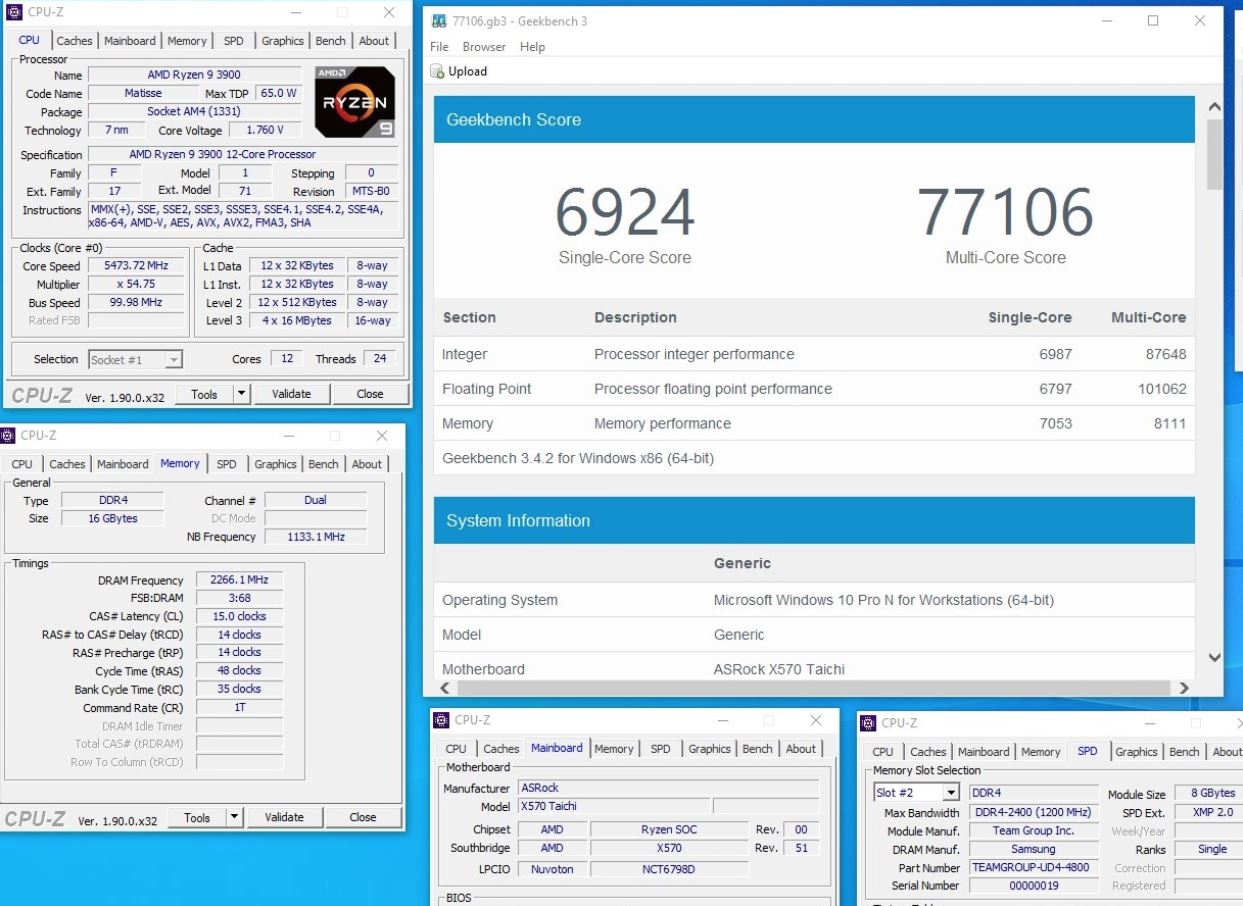
Conclusion
This CPU, depending on the price (assuming it costs less than the Ryzen 9 3900X), will allow AMD to give even more performance per dollar, and give small form factor builders a threaded beast for compact builds. TDP is irrelevant once you set manual overclocking, but you will miss out on a bit of boost clock compared to the 3900X. If that's important for you, stick with the “X” model. Having more options is never a bad thing.
Image Credits: Tom's Hardware
A world-champion competitive overclocker who frequently tops the charts at HWBot, a site which tracks speed records, Allen will do just about anything to push a CPU to its limits. He shares his insights into the latest processors with Tom’s Hardware readers from a hardcore, push-it-to-the-limit overclocker’s perspective.
-
salgado18 It's nice to see extreme overclocking, but since it's a 65W CPU, it would be even nicer to see it tested on an A320 motherboard. The Gigabyte A320M-S2H in my office supports even the 3950X, but how would it handle such power? And how would the 65W 12-thread CPU behave when VRMs are weak?Reply -
Mugsy Low TDP is one of my primary "must haves" when buying a new CPU, so a 65watt 3900 would be awesome. I run my PC 17-18 hours a day 7 days a week, which consumes a ton of power. A savings of 40watts not only means the CPU uses less power, but means less cooling, using even less power. The savings add up.Reply
But how does it compare to lower range CPU's that suck down more power? There would be no point in buying a 3700X if the 3900 is both faster AND uses less power. -
DonCorleoneDeLaRyzen Hey Tom.Reply
Good OC result but the goal is not to freeze complte MB but only to cool CPU and other chips.
In my oppinion this should be done only at one way. That way is CC-way. CC is Cold Current. Simplu imagine than current flow through any resistance not causing heating and over heating but cooling an dfreezing. Interesting is aspect where - temperature depends of resistance ammount of any active component. As resistance is lower cooling is better. This is old Tesla technology, improved and tested by Floyd Sparky Sweet in his VTA device. VTA is Vacuum Tube Amplifier, AboveUnity generator with negative power output of -5Watts. - means out of generator is a COLD CURRENT not HOT CURRENT 99,99999% used today because ignorance of PMSS - PlanetaryMainStreamScience.
Knowing modern HEMT transistor newest generation and used TCXT phase controlled oscillators entrance to the THz range is matter of months. Now using Cold Current HEMTs boosting virtual digital revolution we be possible to the ultimate level. Just imagine Your pc configuration for example 32 cores, each at fixed freq. 156,666 THz with 512 Peta bytes of DDR8 memory at same frequency.
Remember short circuit with HOT CURRENT would burn your fingers, with COLD CURRENT would momentary freeze your fingers.
I would disclose whole CC trick ---> New spinotronic of highly mobility electrons. Swap their particular spins and phased them all in mighty coherent global spin wave and volla - COLD CURRENT would flow and boost your computer to the final frontier.
Regards
DonRyzen -
bit_user Reply
You mean real, actual science? It's the best kind!DonCorleoneDeLaRyzen said:because ignorance of PMSS - PlanetaryMainStreamScience.
Your little satire was cute, but not worth the time & effort, IMO. -
trihell ReplyMugsy said:Low TDP is one of my primary "must haves" when buying a new CPU, so a 65watt 3900 would be awesome. I run my PC 17-18 hours a day 7 days a week, which consumes a ton of power. A savings of 40watts not only means the CPU uses less power, but means less cooling, using even less power. The savings add up.
But how does it compare to lower range CPU's that suck down more power? There would be no point in buying a 3700X if the 3900 is both faster AND uses less power.
Just a note that TDP doesn't equate 1 to 1 with power draw - it's a largely made up metric to approximate max heat generation out of the box that is only really comparable within the same product line. A 3900x could in an extreme case have less power draw than a 3600 (depending how hard you're working the cpu).
